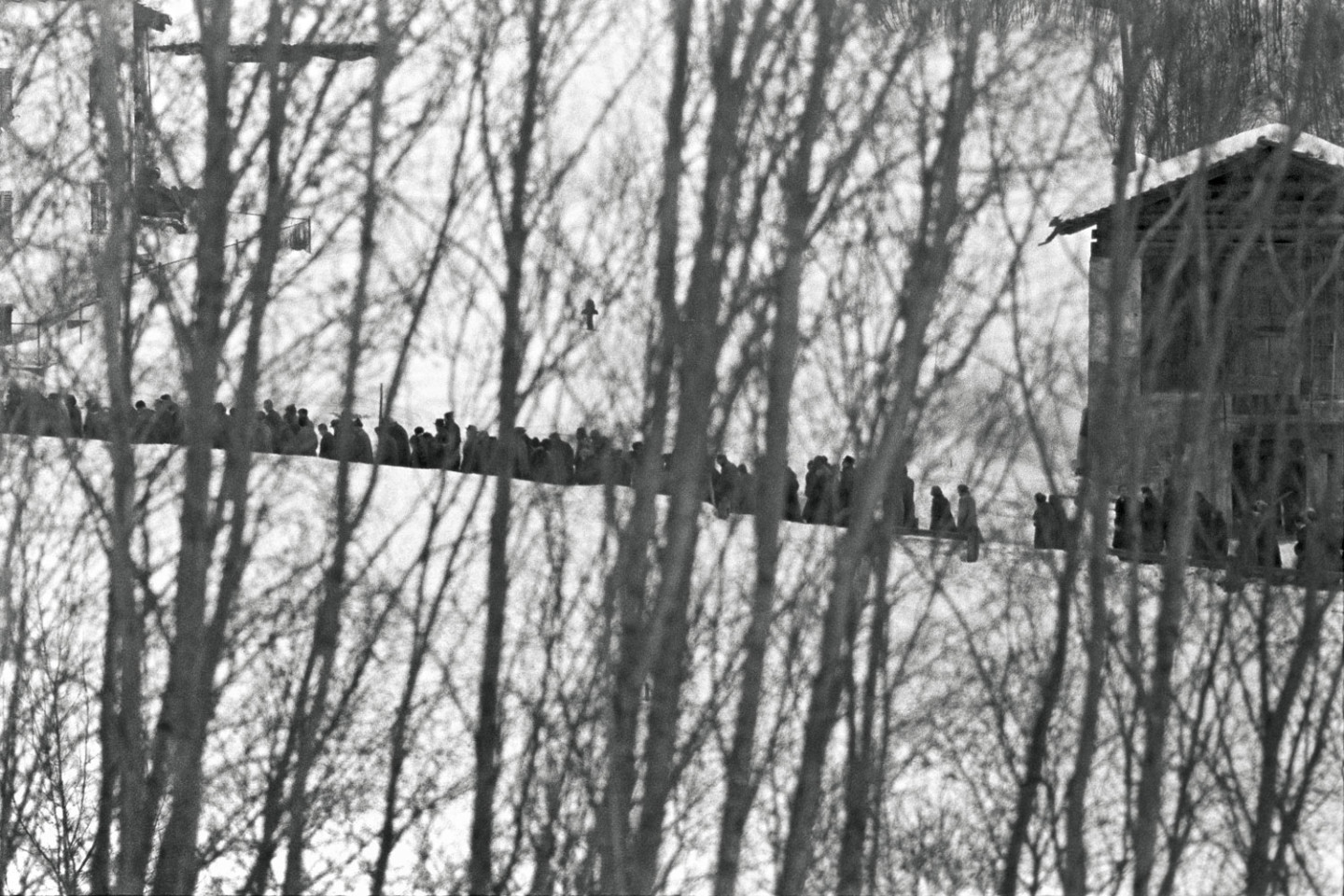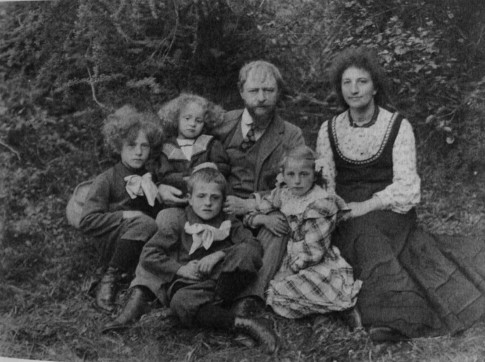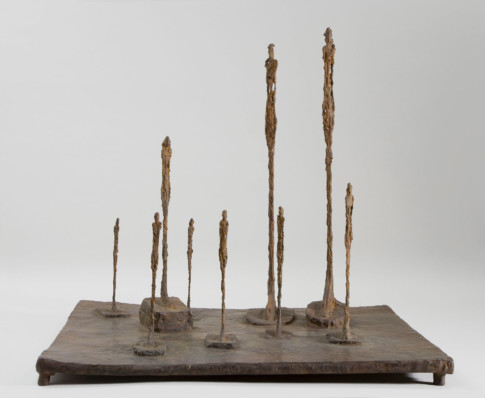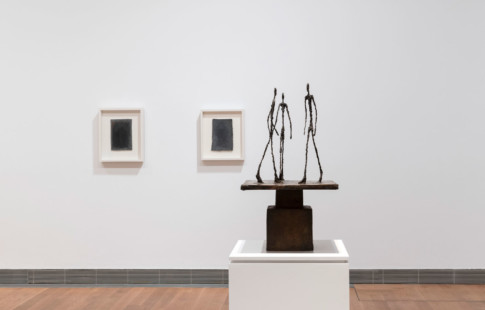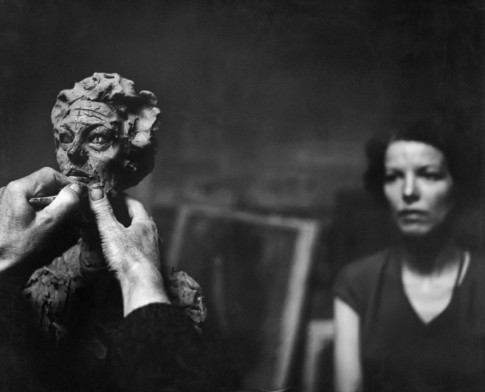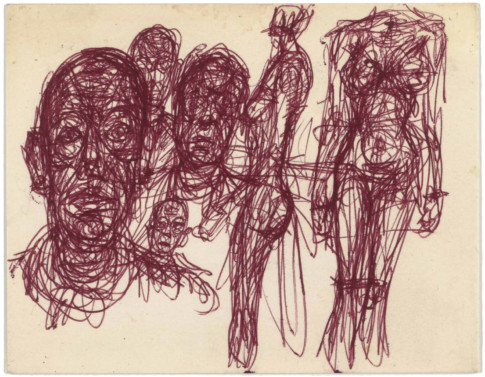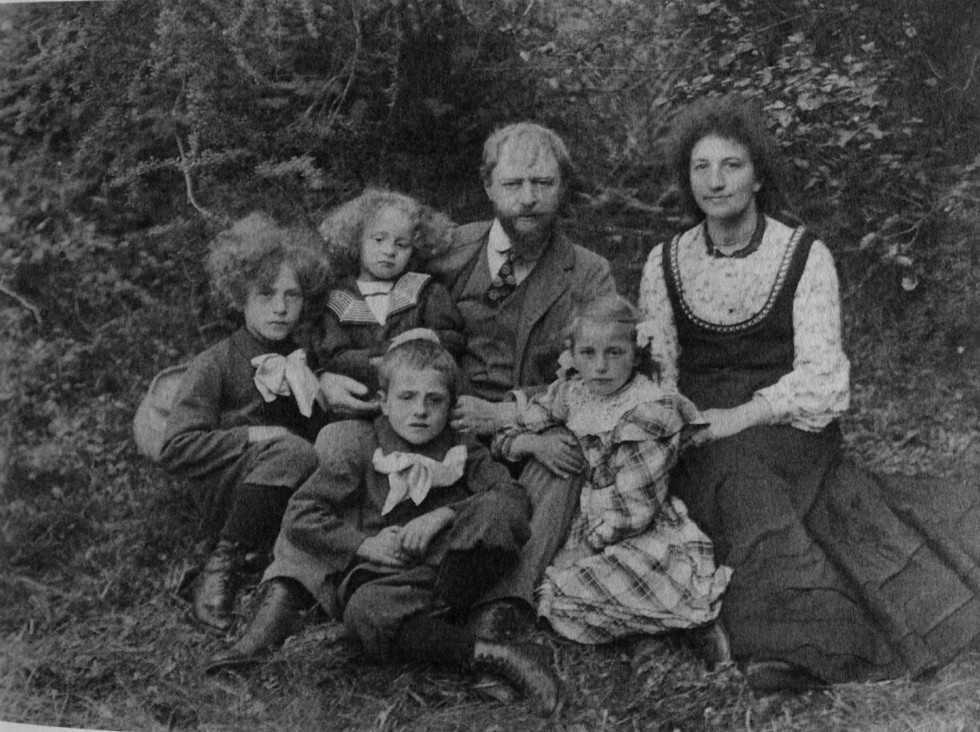
Alberto Giacometti, on the left, and his family, c. 1907. Collection Fondation Giacometti, Paris.
Biography Alberto Giacometti
1904
The family moved to a house in Stampa where Giovanni set up his studio.
Around 1910
Giovanni acquired a summer house in Maloja, on Lake Sils, where he set up a second studio. Alberto added the finishing touches to a bust of his father made by Auguste de Niederhäusern-Rodo, by painting on it—his first attempt at fusing sculpture and painting. He made his first copies of Albrecht Dürer’s engravings.
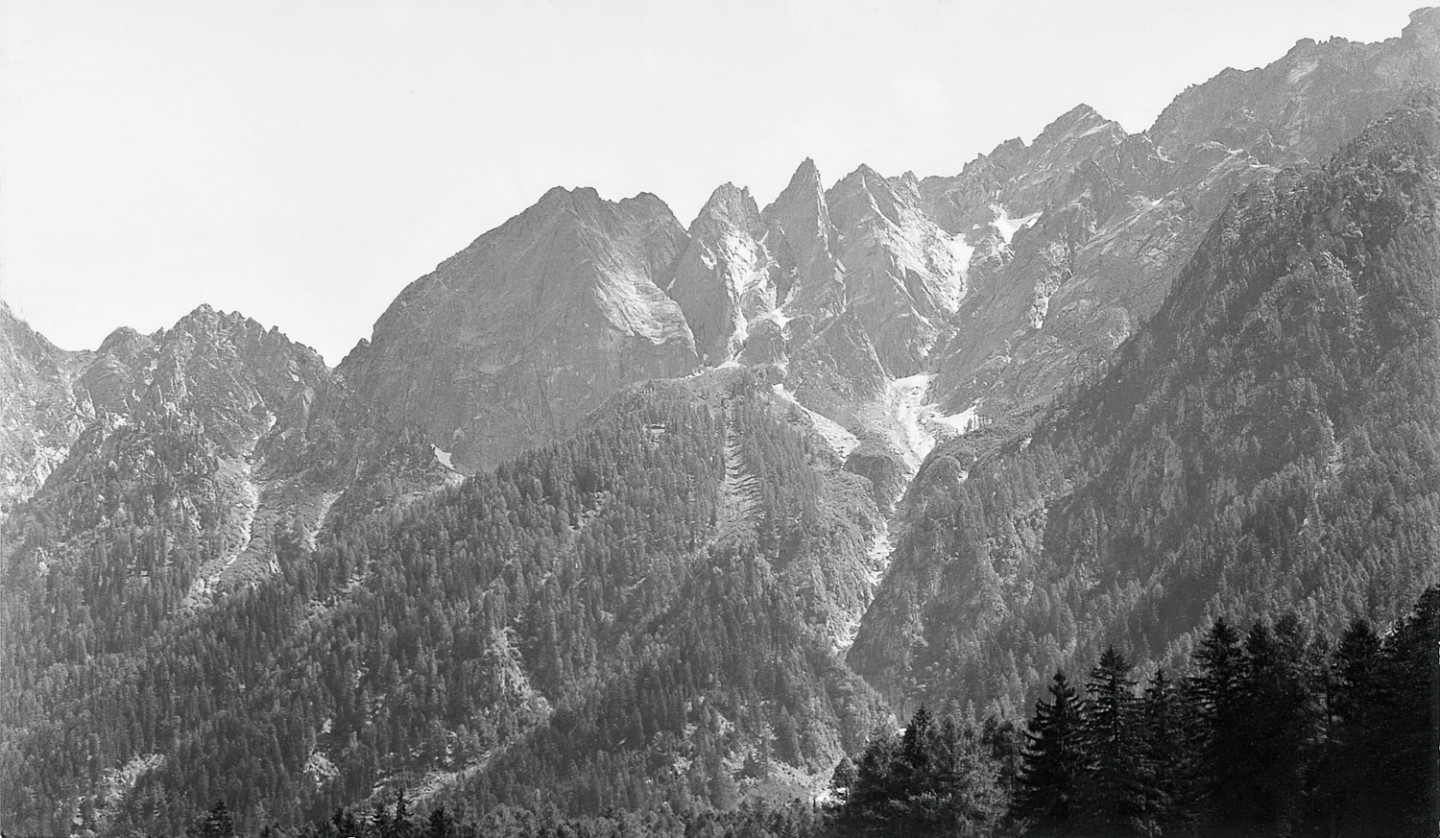
1914–15
Alberto Giacometti spent his childhood in Stampa. While very young, he was initiated by his father into drawing and painting. In December 1914, he made his first sculpture: a bust of his brother Diego, who became his main model. His brother Bruno, his sister Ottilia and his mother also sat for him.
In 1915, he realised his first oil painting, ”Still Life with Apples” (Nature morte aux pommes). All his life he kept those first works in his studio.
1915–19
He studied at the Protestant senior school of Schiers, near Coire.
1919–20
He interrupted his studies and enrolled at the École des Beaux-Arts, then at Geneva’s École des Arts et Métiers. Under the influence of his father, he made several paintings in a neo-impressionist style.
1920
He left school. He accompanied his father to Venice, where Giovanni officially represented Switzerland at the Biennale. Alberto discovered Tintoretto, then visited Padua, where he saw Giotto’s frescoes. In November, he visited Florence, where he discovered Egyptian art, followed by Rome. The influence of Egyptian sculpture was crucial for the evolution of his art.
1921
He settled in Rome at his father’s cousin’s home, then in a small studio in Via Ripetta. He travelled to Naples and Pompeii, before returning to Maloja for the summer. During that period, he made countless copies of works by the Old Masters.
On 3 September, he began a journey with a Dutch librarian named Pieter van Meurs. His elderly travel companion would die in front of him two days later. Giacometti’s work would be influenced by this traumatic experience of death on numerous occasions.
1922
In January, he moved to Paris to study sculpture in the class of Antoine Bourdelle at the Académie de la Grande Chaumière. He stayed there until 1927. His sculptures of the time evolved to embrace post-cubism and primitivism.
1925
He rented a small studio in rue Froidevaux, near the Montparnasse Cemetery, where his brother Diego joined him. Diego started sitting for his brother again and began helping him in his work. Alberto met Pierre Matisse, son of the painter Henri Matisse, who was to represent him in his New York gallery. He sculpted and painted the portrait of Flora Mayo, an American artist he met at the Grande Chaumière. First participation in the Salon des Tuileries, and first commission from the collector Josef Müller.
1926
On 1 December, he moved into the studio at 46, rue Hippolyte-Maindron, where he would remain until his death.
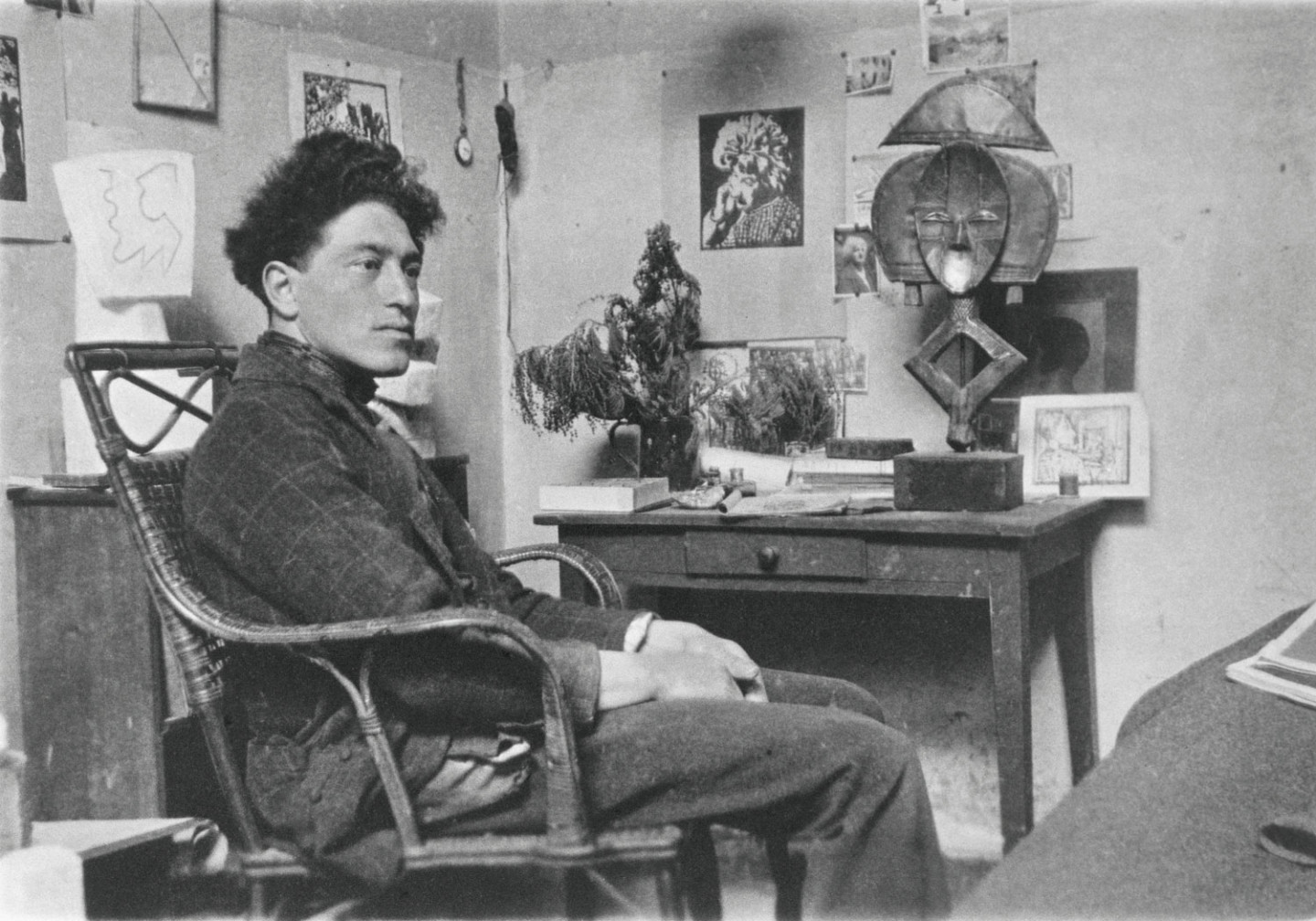
1927
He exhibited for the second time at the Salon des Tuileries, alongside Constantin Brâncuși and Ossip Zadkine in the room for the avant-garde.
1928
He made his first “plaques” (“flat figures”), among them ”Gazing Head”, which he presented at the exhibition ”Italian Artists of Paris” (Les artistes italiens de Paris).
A version of that work was bought the following year by the Argentinian collector Elvira de Alvear, and another by the Vicomte de Noailles.
1929
Jeanne Bucher exhibited his work in her gallery. He met artists Jean Cocteau and André Masson, who introduced him to the avant-garde milieu, then writers Louis Aragon, Georges Bataille and the art historian Carl Einstein. First enthusiastic article on Giacometti by Michel Leiris in the avant-garde magazine ”Documents”.
He signed a one-year contract with Galerie Pierre.
He met the photographer Eli Lotar.
1930–1931
The photographer Man Ray presented him to the interior designer Jean-Michel Frank, for whom he made his first decorative art objects.
At Galerie Pierre he exhibited ”Suspended Ball”, which Salvador Dalí named as the prototype for “objects with a symbolic function”.
He officially became a member of André Breton’s surrealist group and took part in its activities.
1932
First solo exhibition in Paris at Galerie Pierre Colle. Christian Zervos wrote an article in ”Cahiers d’art” illustrated with photos taken by Man Ray in Giacometti’s studio.
1933
First print for the illustration of the novel ”Putting My Foot in It” (Les Pieds dans le plat) by René Crevel. He published several texts in the magazine ”Le Surréalisme au service de la révolution” and, at Tériade’s request, in the magazine ”Minotaure”. He took part in the surrealist exhibition at Galerie Pierre Colle where he sold ”Table” to the Noailles.
His father died a few days later, on 25 June.
1934
In the following months, Giacometti made ”Head-Skull”, ”Invisible Object” and ”Cube”, as a last portrait of his father. He began to distance himself from the surrealist movement, by going back to working from nature.
In December, the Julien Levy Gallery organised his first solo exhibition in New York.
1935
Break with the surrealist group. He undertook research on the theme of heads, using as models his brother Diego and the young Rita Gueyfier, who took turns to sit over several months. He befriended artists Balthus, Francis Gruber and Pierre Tal-Coat. At the end of the year he met Isabel Nicholas, who became his friend and model.
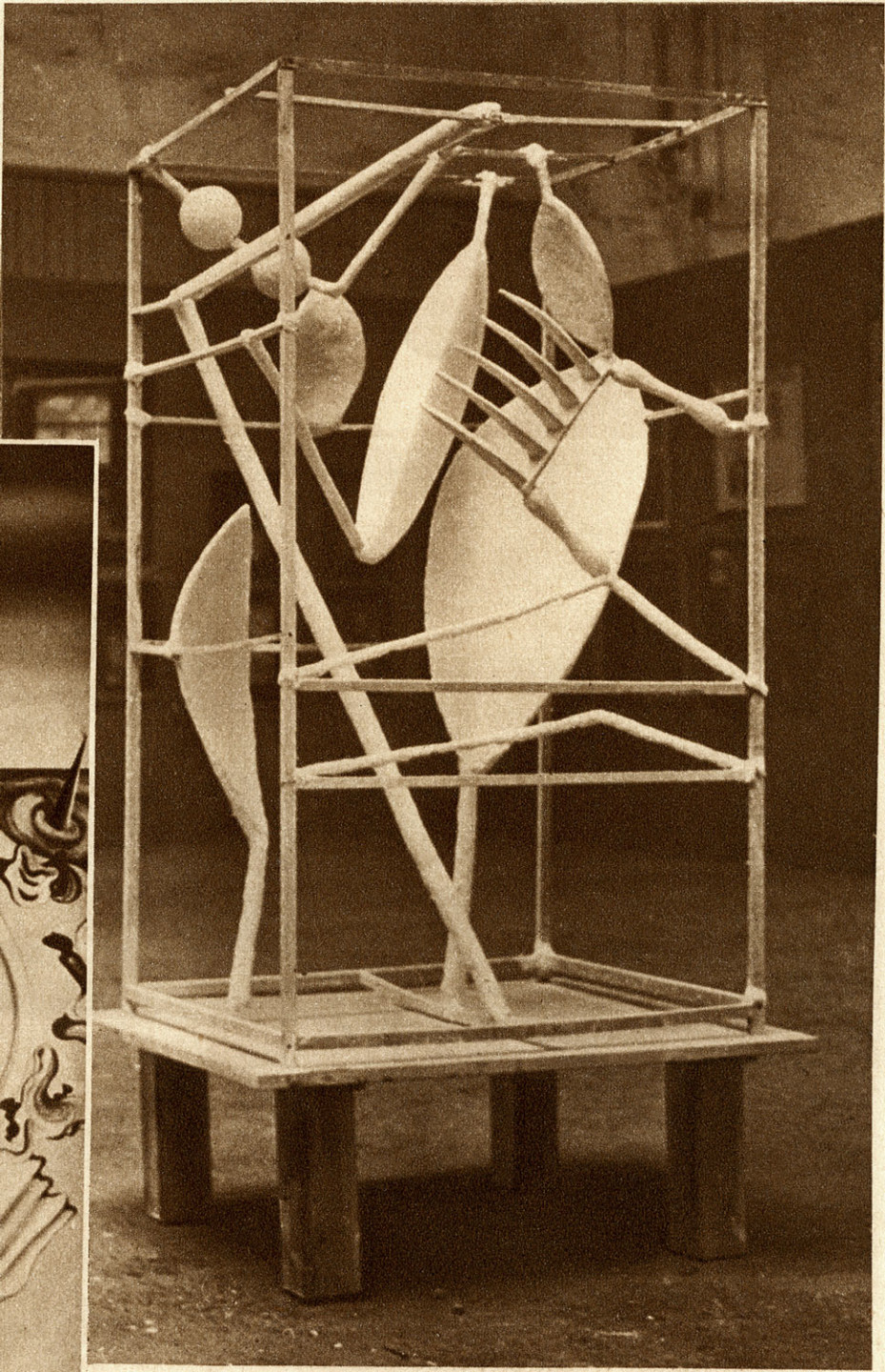
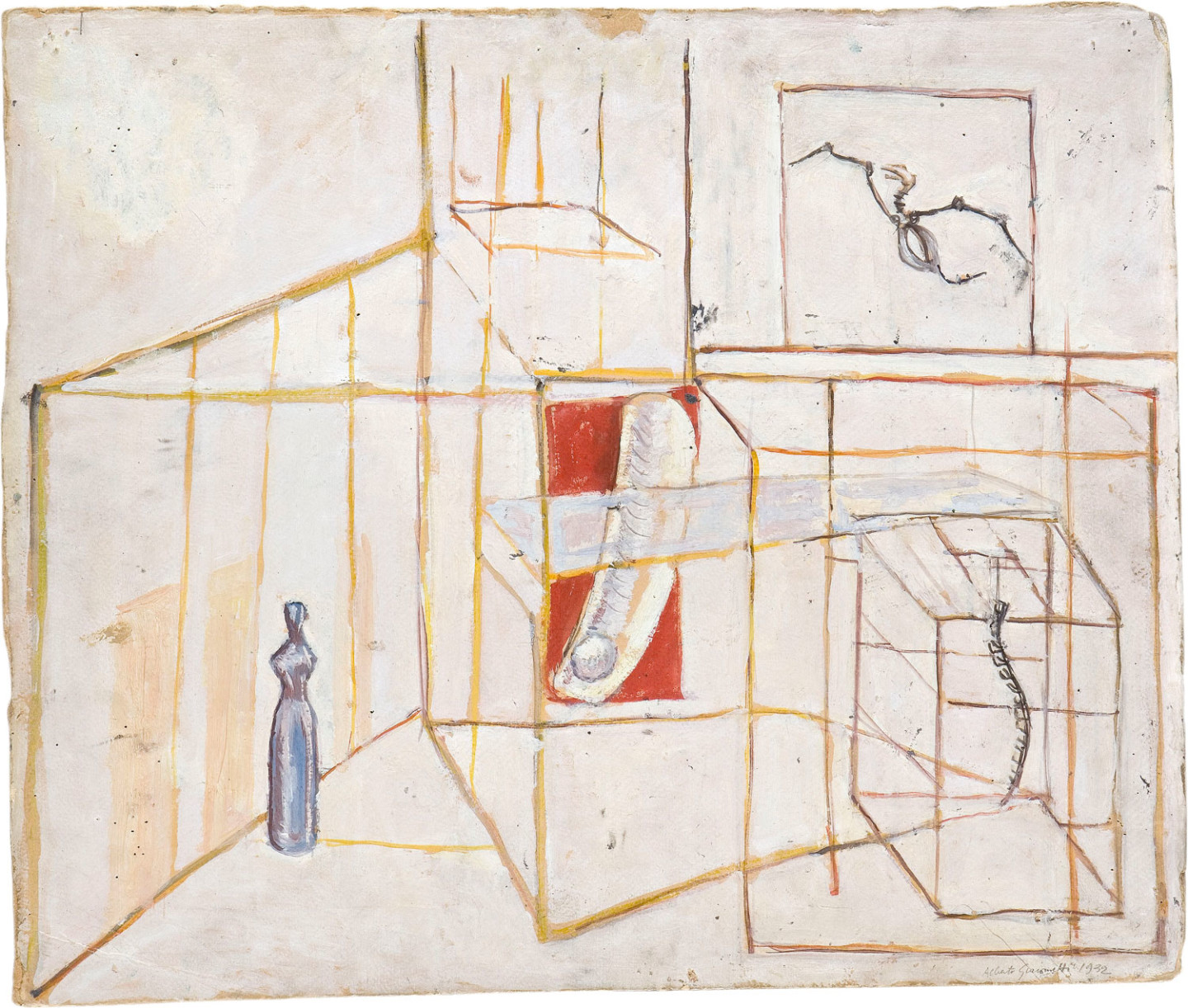
1936
He entrusted Pierre Matisse with representing his work in the United States. ”The Palace at 4 a.m.” (Le Palais à 4h du matin, 1932) entered the collection of New York’s Museum of Modern Art, his first work in that museum. In Paris, the important Paul Cézanne retrospective at the Musée de l’Orangerie confirmed for him the importance of questioning the vision of reality.
1937
Giacometti became friends with the writer Samuel Beckett, with whom he frequented Montparnasse at night. He visited Pablo Picasso in his studio in Grands-Augustins, while he was working on his masterpiece ”Guernica”.
His sister Ottilia died in Geneva as she was giving birth to her first child, Silvio.
1938
He was run over by a car. As a result of that accident he afterwards walked with a slight limp.
The collector Peggy Guggenheim exhibited and sold Giacometti’s work in New York.
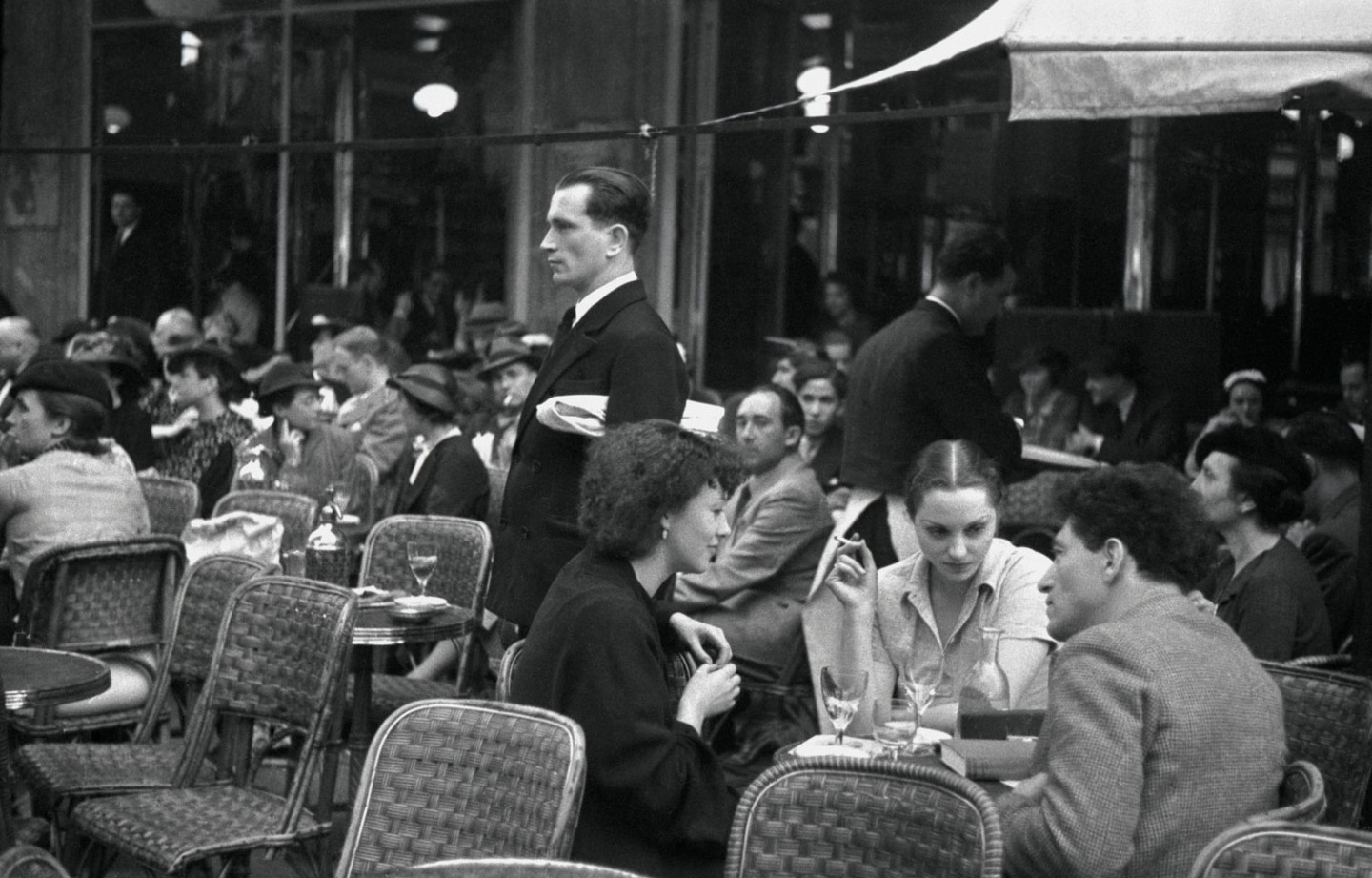
1939
He met the writers Jean-Paul Sartre and Simone de Beauvoir.
The Second World War started on 1 September.
1940–41
France was invaded by the German Nazi forces.
In December, he went to Switzerland, where he stayed for the duration of the war. He made several portraits of his nephew Silvio and met the editor Albert Skira.
1943
He met Annette Arm in Switzerland. She became his wife in 1949 and one of his favourite models.
1944
Eli Lotar met up with Giacometti in Geneva, where he photographed for the magazine ”Labyrinthe” the room in the Hôtel de Rive where Giacometti was working on his series of tiny figures.
1945
The war ended on 8 May with the capitulation of Germany.
In September, he returned to Paris, where Diego had managed to keep his studio in the same state in which he had left it. He returned to the Parisian literary milieu.
1946
He made a series of portraits of personalities of the arts and literature: Marie-Laure de Noailles, Simone de Beauvoir and Georges Bataille. At Aragon’s request, he also sculpted the head of Rol-Tanguy, the communist leader of the French Resistance.
He published “The Dream, the Sphinx and the Death of T.” (“Le Rêve, le Sphinx et la mort de T.”) in the magazine ”Labyrinthe”.
1947
Annette Arm moved into rue Hippolyte-Maindron.
1948
First solo exhibition of his works since 1934 at the Pierre Matisse Gallery in New York. Sartre wrote “The Search for the Absolute” (“La Recherche de l’absolu”) as the preface to the catalogue. The gallery set up solo exhibitions in 1950, 1958, 1961 and 1964.
1949
”Man Pointing” (Homme qui pointe, 1947) was bought by the Tate Gallery in London, the first of Giacometti’s works to be acquired by a European museum. He continued his series of portraits of intellectuals with Jean-Paul Sartre and Tristan Tzara.
He married Annette Arm on 19 July.
1950
He presented new sculptures, among them his figure compositions on square bases, at the Pierre Matisse Gallery in New York.
1951
First exhibition at Galerie Maeght in Paris, where other exhibitions followed in 1954, 1957 and 1961. First lithographs. Responsibility for the exhibition and sale of his output was shared between two galleries.
1952
The Musée de Grenoble bought ”The Cage” (1950), the first of his post-war works to enter a public collection in France. Donation of ”Table” (1933) to the Musée national d’art moderne by the Noailles, the first surrealist work in the French national collection.
1954
First solo exhibition in a museum, in Santa Barbara in California. Project for a medal to Henri Matisse. He made his first portraits of the writer Jean Genet, who was to sit for him until 1958.
1955
First retrospectives in museums: the Solomon R. Guggenheim Museum in New York, Arts Council Gallery in London (organised by David Sylvester) and in Germany (Krefeld, Düsseldorf and Stuttgart).
1956
He represented France at the Venice Biennale, where he exhibited a group of new sculptures: ”Women of Venice” (Femmes de Venise).
He drew the cover for Jean Genet’s ”The Balcony” (Le Balcon).
He met the philosopher Isaku Yanaihara, who sat for him over several summers (in 1957, 1959, 1960 and 1961).
1957
Jean Genet wrote ”The Studio of Giacometti” (L’Atelier d’Alberto Giacometti), which first appeared in the magazine ”Derrière le miroir”, and was then published in 1963 as a book, illustrated with photographs by Ernst Scheidegger.
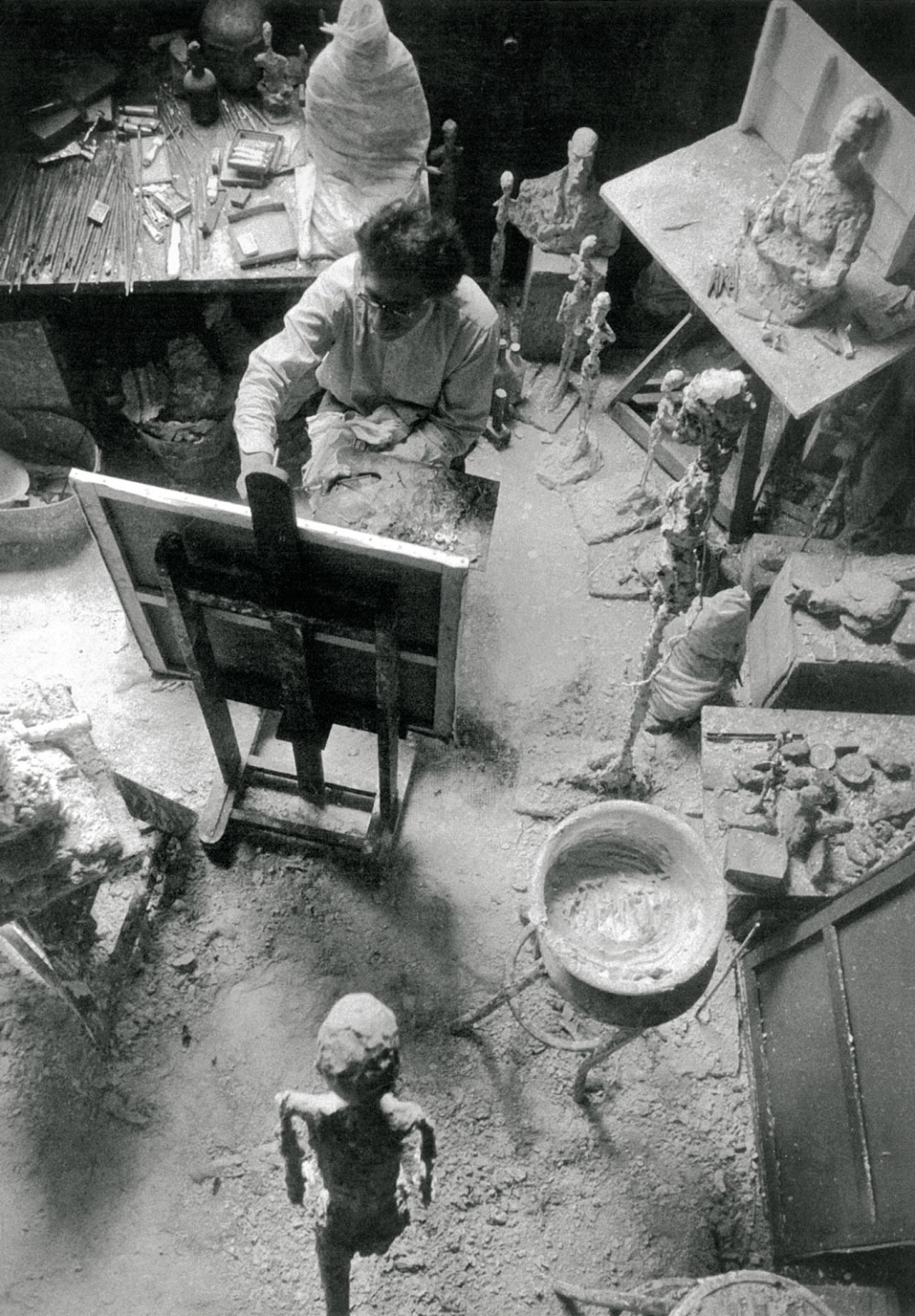
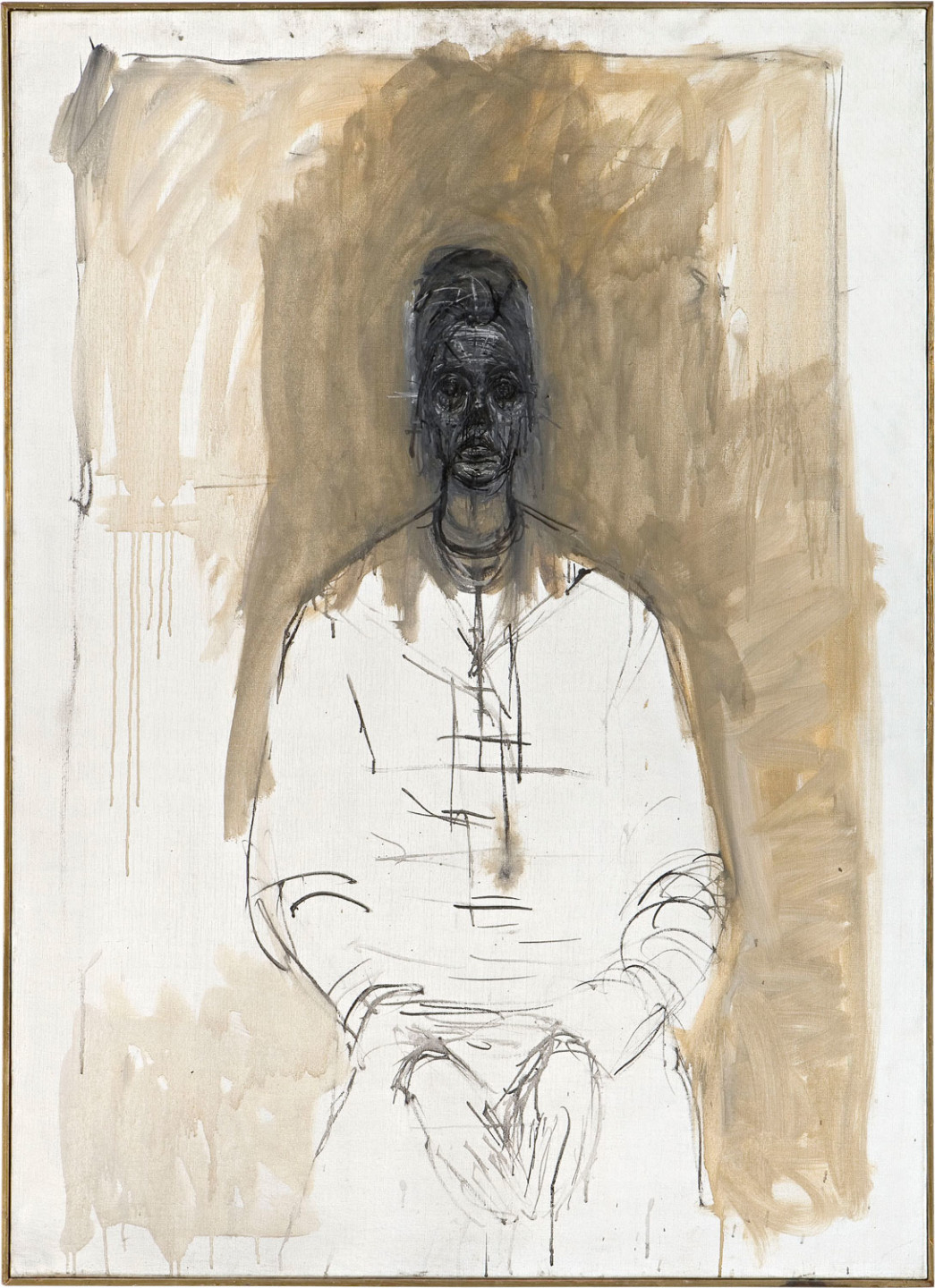
1958
First solo exhibition in Japan.
He met Caroline, who became his mistress and model until 1965.
1959
He was invited to take part in a competition for a monument in the plaza of Chase Manhattan Bank in New York, but the project was never completed. He started the book of lithographs ”Paris sans fin” (Paris Without End), which was published posthumously in 1969.
1961
First Prize for sculpture at the annual Carnegie International in Pittsburgh.
Beckett commissioned the set for his play ”Waiting for Godot” at the Théâtre de l’Odéon.
Giacometti’s work is included in the exhibition Movement in Art, organised by Pontus Hultén, at the Stedelijk, Amsterdam, travelling to Moderna Museet, Stockholm and Louisiana Museum of Modern Art, Humlebaek.
1962
Invited to the Venice Biennale with a solo exhibition, he won the Grand Prize for sculpture. He took part in the hanging of his large retrospective at the Kunsthaus Zurich, organised by René Wehrli and his brother, Bruno Giacometti.
Jacques Dupin published the first monograph devoted to Giacometti for Maeght Éditeur.
1963
His ulcer had turned cancerous and Giacometti had to have most of his stomach removed.
1964
He received the Guggenheim International Award for painting. Opening of the Giacometti room and courtyard at the Fondation Maeght in Saint-Paul de Vence. He installed the works planned for Chase Manhattan Bank: two men walking, two large women, and a large head. He also made a group of ”Women of Venice” in bronze.
His mother died on 25 June.
1965
Three retrospectives were held in London, New York and Copenhagen, which he attended. He actively took part in the one in London at the Tate Gallery.
Creation of the Alberto Giacometti-Stiftung in Zurich, through the purchase of part of the collection of American industrialist, G. David Thompson.
He received the National Arts Award from the French Ministry for Cultural Affairs.
1966
He died suddenly at the hospital in Coire on 11 January. He was buried on 15 January in the cemetery in Borgonovo.
